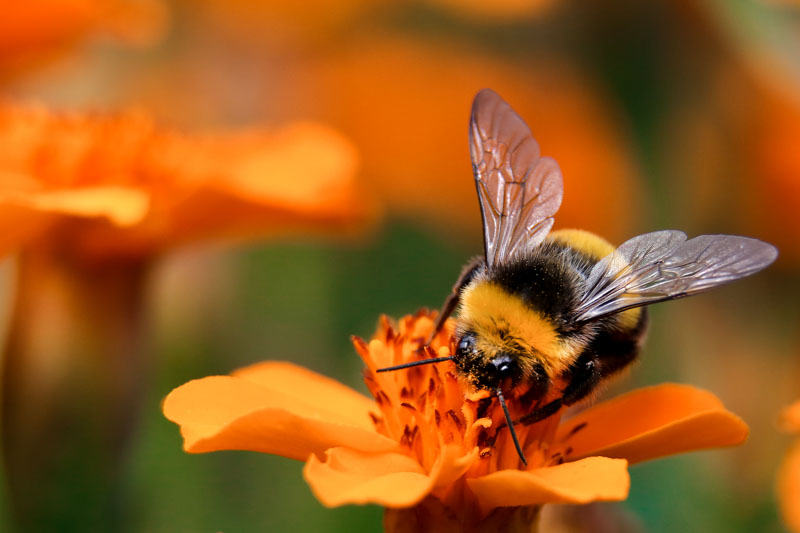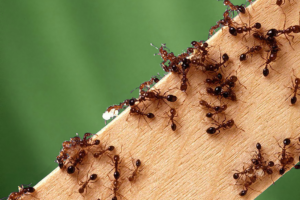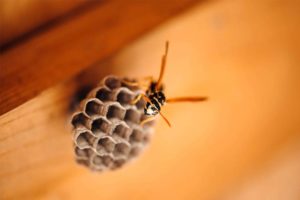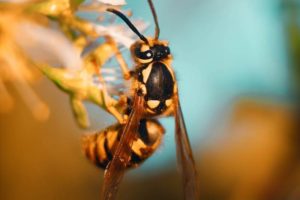Bumble bees are known for their chubby, fuzzy bodies. Their appearance reflects their personality: sweet, helpful, and prefer to stay away from trouble. Check out our quick FAQ to learn the essentials about bumble bees, like: do bumble bees sting, where do they live, and for how long? Then read on for full details about this docile, stinging insect.
Yes! Bumbles bees do sting if severely provoked. Unlike honey bees, they can sting multiple times. If you are stung by a bee, follow these best practices for taking care of yourself. Of course, if you suspect a serious allergic reaction, call 911 right away!
No, bumble bees are not aggressive. It is very rare to be stung by a bumble bee, even though they have the ability to sting multiple times in a row.
Bumble bees live underground in nests. At the beginning of Spring, queen bees find an abandoned rodent burrow to call home. Bumble bees can be found all over the world, but they do prefer cooler and temperate climates the most.
Most male and worker bumble bees live for 28 days. Queen bumble bees live for one year.
Yes, bumble bees do create honey. Unlike honey bees, bumble bees don't make enough honey for humans to collect and sell, though.
Bumble Bees Are Pollinators
Bumble bees are incredibly important. They pollinate flowers, fruits, and vegetables by moving pollen within and between plants. Fun fact: Bumble bees are especially talented at pollinating nightshade vegetables! Peppers, tomatoes, and eggplants all thrive because of these furry insects.
Because bumble bees gather pollen from a variety of plants, they are called foragers. They do not depend on one or two specific food sources. However, some plants do need bumble bees in order to pollinate. Pollination is the transfer of pollen between the male part of a plant to a female part. The process results in fertilization and seed production. This is why bees are so important! Seeds are one way plants reproduce.
There are about 250 species of bumble bee worldwide, and it is important that we protect them!
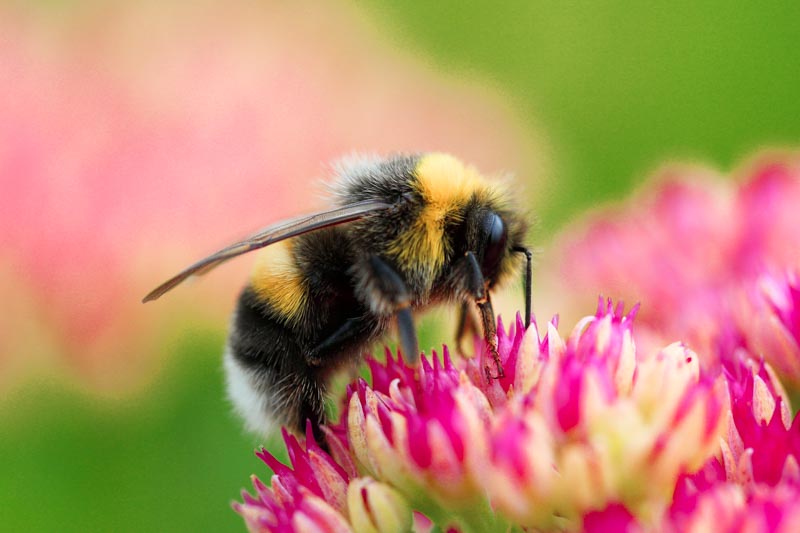
Bumble Bees Are Social
Bees create roles and jobs for one another. They work together as a team. A single queen, who is the mother of the hive, directs the team. She is the oldest, hibernating during the winter and creating the nest once spring arrives. After finding a safe underground burrow, the queen bumble bee forms a honey cup out of wax. Pollen is stored in the honey cup for her eggs, or brood, to feed from.
It takes only four weeks for these larvae to become adult, female workers. They are each assigned jobs. Some clean the nest, some forage, and some bees care for additional larvae. The worker’s main priority is to feed and care for the colony so the queen can continue reproducing.
While the workers only live an average of 28 days, queen bumble bees live for one year. She can produce 1,000 offspring in her short life. Of course, she couldn’t be successful without all her hardworking children, though! Near the end of her life, she produces male bumble bees (or “drones”) and new queen bees. The males mate with females, and the females hibernate during winter before starting the cycle over again. The rest of the hive, the males, and the old queen all pass away at the end of fall.
What Do Bumble Bees Eat?
When bees are pollinating flowers, they collect extra pollen in baskets on their hindlegs. They also gather nectar and bring these food sources back to the hive. A colony of 100 bumble bees will consume nearly 2g of pollen and over 40 ml of sugar syrup per day! So, worker bees must be constantly foraging to keep the hive well-fed.
Bumble Bees VS Honey Bees
If you don’t know the differences between bumble bees and honey bees, you aren’t alone. Both are known for being nonaggressive. (You’re much more likely to be stung by a wasp!) But along with this similarity in personality, there are many, many differences. Let’s talk about three big ones: body type, stinging abilities, and pollinating abilities.


Appearance
Bumble bees and honey bees both belong to the Apidae family. Then, the bumble bee splits off into the Bombus genus. Their round bodies look like a flying ball of fuzz. But honey bees belong to the Apis genus. Their bodies are thinner, smaller, and appear divided into two parts. If you weren’t looking carefully, you may mistake one for a wasp!
Habitat
Honey bees are hyper-social. They live in hives either maintained by beekeepers or in hollow trees. They have the ability to survive winters, buzzing awake each spring to produce honey and offspring. Honey bee queens can live up to three or four years.
Bumble bees are also social, but not as much as honey bees. Their queen creates a nest underground in an abandoned burrow. Then she spends the warm seasons creating workers to maintain the hive. At the end of the season, she passes away and leaves behind new queens to replace her. Also, any honey the colony produces during the summer is consumed for energy.
Pollination
Stingers
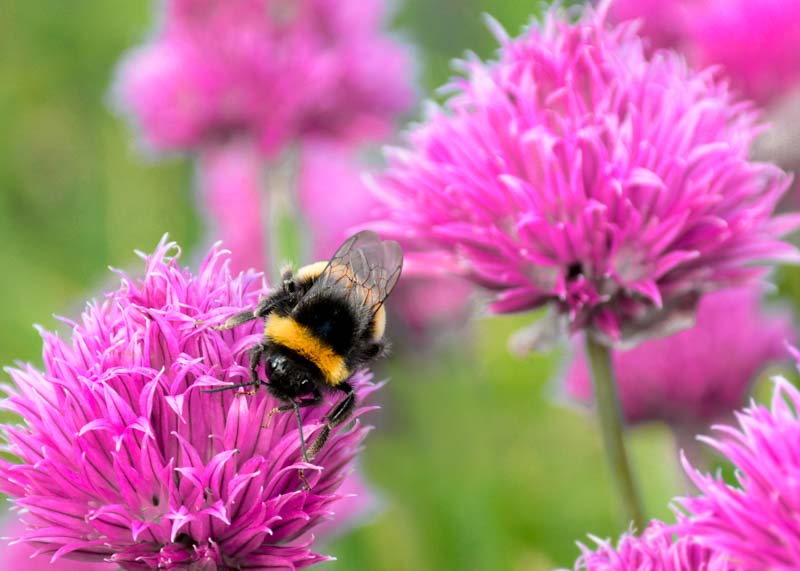
What to do if you FIND A NEST
Bumble bees only work out of a nest for one year. So, if you can, leave the nest alone. Bumble bees need to be protected! Try your best to keep them from being displaced. But, if the nest is in a troublesome spot for you, contact a local specialist.
What to do if you're stung by a bumble bee
Bumble bees are very patient. They will only sting if they feel extremely threatened! But if this does happen, here are some simple steps for treating a bee sting. If you suspect you’re having a bad allergic reaction, always call 911. Later, follow up with an allergist to learn more about specific allergies and treatment options, like venom immunotherapy.
The United States Forest Service offers great information on bumble bees. We gathered some facts found in this article in their Guide to Bumble Bees of the Western United States.


